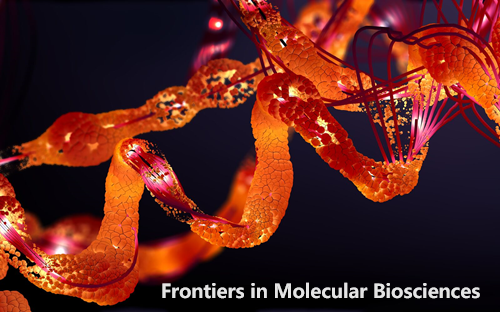以死亡受体 5 (DR5) 为靶点,对原发性骨与软组织肿瘤进行成像和治疗:文献更新
IF 3.9
3区 生物学
Q2 BIOCHEMISTRY & MOLECULAR BIOLOGY
引用次数: 0
摘要
背景死亡受体5(DR5)在原发性骨和软组织肉瘤细胞表面表达,其激活主要通过细胞凋亡诱导细胞死亡。DR5 激动剂与多柔比星等常用化疗药物联合使用可促进细胞死亡。目前,临床试验正在研究使用新型生物制剂(如双特异性或四价抗体)激活 DR5 对改善复发或难治性癌症患者生存率的有效性。此外,还在继续研究使用新型联合疗法来增强 DR5 反应,例如与凋亡蛋白抑制剂(IAP)拮抗剂[如第二种线粒体衍生的 Caspase 激活剂(SMAC)仿制药]和免疫检查点抑制剂抗程序性死亡配体 1(anti-PD-L1)或抗程序性细胞死亡-1(anti-PD-1)抗体联合使用。其他疗法包括纳米粒子介导的TRAIL质粒DNA或TRAIL mRNA的递送,以及干细胞作为载体向肿瘤靶向递送抗癌药物(如TRAIL)。已开发出测试新型制剂的方法,并利用成像技术检测临床前模型和患者体内的 DR5。这些模型包括三维球体、转基因小鼠模型、新型颌骨肉瘤模型和患者异种移植(PDX)动物模型。目前有两项正在进行的临床试验侧重于激活 DR5,即 IGM-8444 和 INBRX-109,这两项试验已进入第二阶段。通过与单链可变片段(scFv-TRAIL)的融合、针对肿瘤相关抗原(TAAs)的TRAIL递送以及干细胞的使用,进一步改进了TRAIL的递送,重点是利用双功能策略向癌细胞靶向递送TRAIL。本文章由计算机程序翻译,如有差异,请以英文原文为准。
Targeting Death Receptor 5 (DR5) for imaging and treatment of primary bone and soft tissue tumors: an update of the literature
BackgroundDeath Receptor 5 (DR5) is expressed on the surface of primary bone and soft tissue sarcoma cells, and its activation induces cell death primarily through apoptosis. The combination of DR5 agonists and commonly used chemotherapeutic agents, such as doxorubicin, can promote cell death. Currently, clinical trials are investigating the effectiveness of DR5 activation using new biological agents, such as bi-specific or tetravalent antibodies, in improving the survival of patients with relapsed or refractory cancers. Furthermore, investigations continue into the use of novel combination therapies to enhance DR5 response, for example, with inhibitor of apoptosis protein (IAP) antagonist agents [such as the second mitochondria-derived activator of caspase (SMAC) mimetics] and with immune checkpoint inhibitor anti-programmed death-ligand 1 (anti-PD-L1) or anti-programmed cell death-1 (anti-PD-1) antibodies. Other therapies include nanoparticle-mediated delivery of TRAIL plasmid DNA or TRAIL mRNA and stem cells as a vehicle for the targeted delivery of anti-cancer agents, such as TRAIL, to the tumor.Methodsscoping review of the literature from November 2017 to March 2024, utilizing PubMed and Google Scholar.ResultsNew agents under investigation include nanoTRAIL, anti-Kv10.1, multimeric IgM, and humanized tetravalent antibodies. Developments have been made to test novel agents, and imaging has been used to detect DR5 in preclinical models and patients. The models include 3D spheroids, genetically modified mouse models, a novel jaw osteosarcoma model, and patient-derived xenograft (PDX) animal models. There are currently two ongoing clinical trials focusing on the activation of DR5, namely, IGM-8444 and INBRX-109, which have progressed to phase 2. Further modifications of TRAIL delivery with fusion to single-chain variable fragments (scFv-TRAIL), directed against tumor-associated antigens (TAAs), and in the use of stem cells focus on targeted TRAIL delivery to cancer cells using bi-functional strategies.ConclusionIn vitro , in vivo , and clinical trials, as well as advances in imaging and theranostics, indicate that targeting DR5 remains a valid strategy in the treatment of some relapsed and refractory cancers.
求助全文
通过发布文献求助,成功后即可免费获取论文全文。
去求助
来源期刊

Frontiers in Molecular Biosciences
Biochemistry, Genetics and Molecular Biology-Biochemistry
CiteScore
7.20
自引率
4.00%
发文量
1361
审稿时长
14 weeks
期刊介绍:
Much of contemporary investigation in the life sciences is devoted to the molecular-scale understanding of the relationships between genes and the environment — in particular, dynamic alterations in the levels, modifications, and interactions of cellular effectors, including proteins. Frontiers in Molecular Biosciences offers an international publication platform for basic as well as applied research; we encourage contributions spanning both established and emerging areas of biology. To this end, the journal draws from empirical disciplines such as structural biology, enzymology, biochemistry, and biophysics, capitalizing as well on the technological advancements that have enabled metabolomics and proteomics measurements in massively parallel throughput, and the development of robust and innovative computational biology strategies. We also recognize influences from medicine and technology, welcoming studies in molecular genetics, molecular diagnostics and therapeutics, and nanotechnology.
Our ultimate objective is the comprehensive illustration of the molecular mechanisms regulating proteins, nucleic acids, carbohydrates, lipids, and small metabolites in organisms across all branches of life.
In addition to interesting new findings, techniques, and applications, Frontiers in Molecular Biosciences will consider new testable hypotheses to inspire different perspectives and stimulate scientific dialogue. The integration of in silico, in vitro, and in vivo approaches will benefit endeavors across all domains of the life sciences.
 求助内容:
求助内容: 应助结果提醒方式:
应助结果提醒方式:


